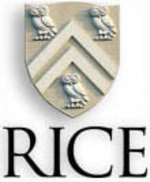Chemists may quit, when their contracts are up, and become the center of another institution’s chemistry program. That’s expected. In many ways, it’s welcomed. They don’t usually quit and take the whole program with them.
I much prefer having the nation’s best chemistry program to having its best football program.
So back to business. Another big win for the Owls on the chemistry front.
This time, Nanotechnology Now reports, graduate student Jianzhong Yang and his brother, Baylor College of Medicine assistant professor Jianhua Yang, used Bucky Amino Acids (an essential amino acid married to a Carbon-60 Buckyball, developed by the team of Prof. Andrew Barron) linked with peptides, to penetrate the membranes of liver cancer and neuroblastoma cells. The latter is the leading cancer killer of children. (Baylor’s College of Medicine is in the Texas Medical Center, across Main Street from the Rice campus in Houston. The elder Yang is also attached to Texas Childrens’ Cancer Center, which is in the same complex as Baylor.)
The Buckyballs acted as a "passkey," allowing the peptides to pass through cancer cell membranes. Attaching an anti-cancer drug to the peptide (which is a simple protein) lets you kill the cancer cell, and only the cancer cell. There is none of the "collateral damage" that is a necessary by-product of chemotherapy or radiation. The drug attached to the Buckyball can also be fairly simple, since its chief problem — getting into the cell — is solved by the Buckyball.
All the details will be found in the January 21 issue of the journal Organic and Biomolecular Chemistry.
This is precisely the sort of thing Nobel prize winner Richard Smalley
was working on at the time of his death, of leukemia, a few years ago.
He felt Buckyballs could be a highly-effective drug delivery system
against cancer, and the Barron team has now proven him right.
Barron’s site indicates Yang has since gone on to a job at Luna Innovations, most likely at Luna Nanoworks (right),
a unit which is an outgrowth of Virginia Tech (Go Hokies) and works
with carbon nanospheres. Luna Nanoworks may be best known for its Trimetasphere materials, which trap metals inside the spheres as they are created, each with unique properties.












